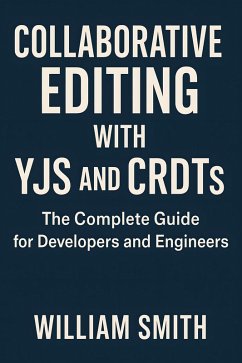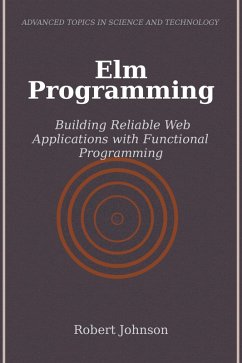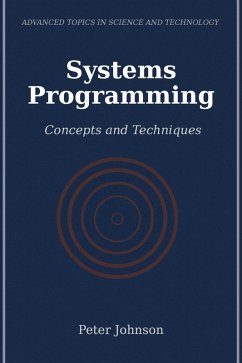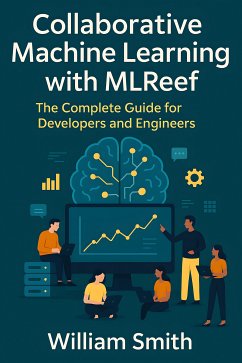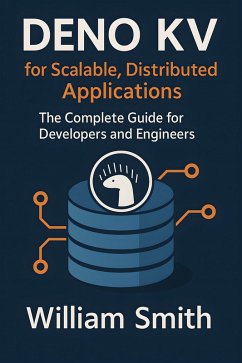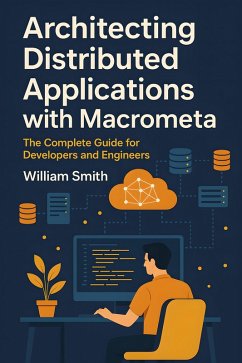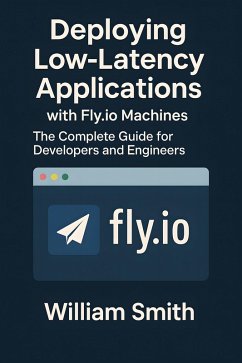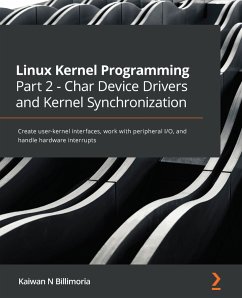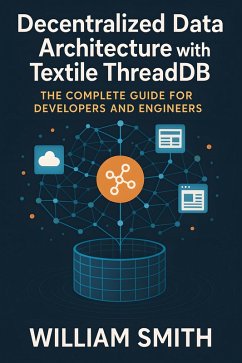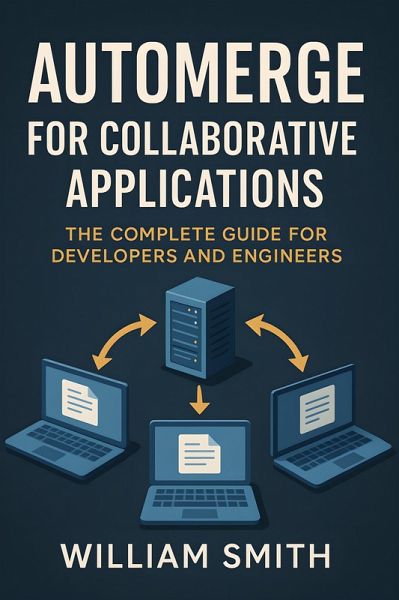
Automerge for Collaborative Applications (eBook, ePUB)
The Complete Guide for Developers and Engineers

PAYBACK Punkte
0 °P sammeln!
"Automerge for Collaborative Applications" In an era where real-time collaboration and distributed editing are foundational to many digital experiences, "Automerge for Collaborative Applications" delivers an in-depth exploration of the technologies, principles, and best practices behind building robust, scalable collaborative systems. The book opens with a comprehensive survey of collaborative application architectures, from traditional client-server models to peer-to-peer paradigms, outlining the evolution, pivotal challenges, and technical milestones that have shaped modern collaboration pla...
"Automerge for Collaborative Applications"
In an era where real-time collaboration and distributed editing are foundational to many digital experiences, "Automerge for Collaborative Applications" delivers an in-depth exploration of the technologies, principles, and best practices behind building robust, scalable collaborative systems. The book opens with a comprehensive survey of collaborative application architectures, from traditional client-server models to peer-to-peer paradigms, outlining the evolution, pivotal challenges, and technical milestones that have shaped modern collaboration platforms. It thoughtfully positions Automerge and Conflict-free Replicated Data Types (CRDTs) within this landscape, examining their advantages over traditional operational transformation techniques in addressing concurrency, consistency, and user experience.
Delving deep into Automerge itself, the text systematically unravels its core principles, data structures, and synchronization mechanisms. Readers are guided through topics such as state modeling, change encoding, actor and clock management, and conflict resolution-each explained with clarity and supported by real-world scenarios. Special attention is given to advanced subjects like optimizing performance, supporting binary data, handling offline edits, and integrating with varied client and backend environments. Practical insights abound, including strategies for effective testing, debugging, and the design of user interfaces that empower collaboration while making conflict awareness intuitive.
Further setting itself apart, the book thoroughly addresses the nuances of security, privacy, and regulatory compliance in collaborative environments. It presents actionable guidance on encryption, access control, auditability, and maintaining compliance with evolving legal frameworks such as GDPR and CCPA. The closing chapters look beyond the present, surveying future directions for the Automerge ecosystem, including edge computing, AI-assisted collaborations, and open-source community development. Whether you are a developer, architect, or researcher, "Automerge for Collaborative Applications" serves as an authoritative guide for building next-generation collaborative software with confidence and insight.
In an era where real-time collaboration and distributed editing are foundational to many digital experiences, "Automerge for Collaborative Applications" delivers an in-depth exploration of the technologies, principles, and best practices behind building robust, scalable collaborative systems. The book opens with a comprehensive survey of collaborative application architectures, from traditional client-server models to peer-to-peer paradigms, outlining the evolution, pivotal challenges, and technical milestones that have shaped modern collaboration platforms. It thoughtfully positions Automerge and Conflict-free Replicated Data Types (CRDTs) within this landscape, examining their advantages over traditional operational transformation techniques in addressing concurrency, consistency, and user experience.
Delving deep into Automerge itself, the text systematically unravels its core principles, data structures, and synchronization mechanisms. Readers are guided through topics such as state modeling, change encoding, actor and clock management, and conflict resolution-each explained with clarity and supported by real-world scenarios. Special attention is given to advanced subjects like optimizing performance, supporting binary data, handling offline edits, and integrating with varied client and backend environments. Practical insights abound, including strategies for effective testing, debugging, and the design of user interfaces that empower collaboration while making conflict awareness intuitive.
Further setting itself apart, the book thoroughly addresses the nuances of security, privacy, and regulatory compliance in collaborative environments. It presents actionable guidance on encryption, access control, auditability, and maintaining compliance with evolving legal frameworks such as GDPR and CCPA. The closing chapters look beyond the present, surveying future directions for the Automerge ecosystem, including edge computing, AI-assisted collaborations, and open-source community development. Whether you are a developer, architect, or researcher, "Automerge for Collaborative Applications" serves as an authoritative guide for building next-generation collaborative software with confidence and insight.
Dieser Download kann aus rechtlichen Gründen nur mit Rechnungsadresse in A, B, BG, CY, CZ, D, DK, EW, E, FIN, F, GR, H, IRL, I, LT, L, LR, M, NL, PL, P, R, S, SLO, SK ausgeliefert werden.




